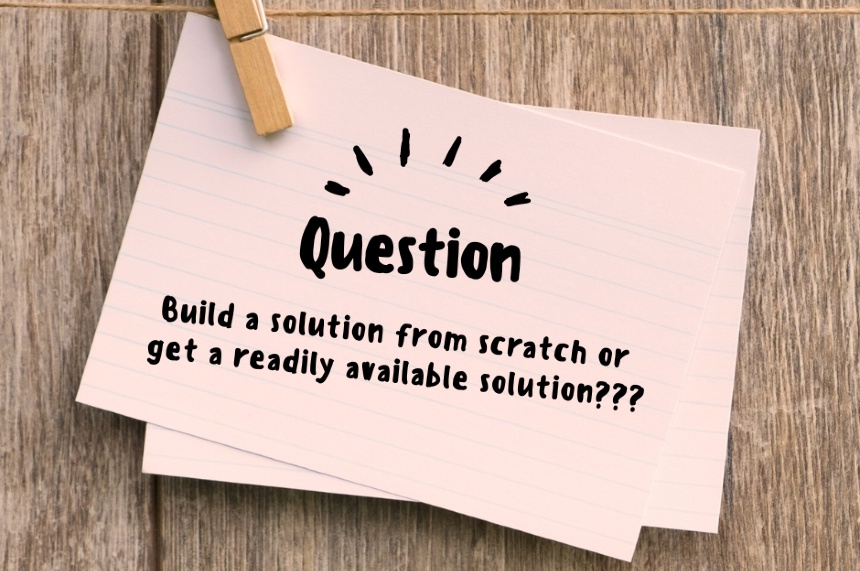Direct Procurement: Challenges in Product Manufacturing Companies
Business | August 07, 2022 | By
Direct Procurement Challenges in Product Manufacturing Companies
Procurement teams juggle multiple roles, from identifying the need to vendor/supplier management and even facilitating payment processing. And while doing all of these, they also need to keep an eye on the costs.
When it comes to direct procurement, teams are in charge of bringing materials that go directly into the production of a product. A slip in the process could directly affect the company’s reputation, customer satisfaction, and the bottom line. The life of a direct procurement buyer is not easy, no doubt. Here are some of the challenges a buyer encounters in procuring direct material in product manufacturing companies
Direct Procurement Challenges
Handling a Complex Process
Direct procurement is a complex and multi-layered process, that have a direct impact on the final product. Direct Material Procurement teams have to be on top of the following (but not limited to),
- From handling the Bill of Materials (BOM) that contains the components and sub-components of the final product
- Demand tracking
- Analyzing the demand patterns
- Strategic sourcing
- Optimizing the product cost
- Maintaining optimum inventory levels, and
- Tracking and fulfilling the sales orders
To achieve success in the above process, there is a lot of dependency on internal and external stakeholders such as Production (planning and manufacturing), Engineering, Finance, Suppliers, and others.
A small mistake in the process and there is a direct effect on the bottom line, sometimes, in unimaginable proportions. For example, any changes in the design would call for changes in the BOM. Therefore, the engineering team must convey the changes to the buyers. Based on the complexity of the changes, the buyers would have to collaborate with production, engineering, and suppliers, and complete the make-buy decision-making process. Then, based on the outcome, POs are raised. The updated data must be visible to all the stakeholders involved.
These processes are dependent on the accuracy and availability of information and the collaboration between teams at all times, which is not available or streamlined in many companies.
Managing Supply Chain Risks

When it comes to customer satisfaction, reputation, and credibility of a business, maintaining a sufficient inventory to meet customer demand is a must. We know that globalization offers businesses more supplier choices leading to competitive prices. However, it brings with it associated risks. And, procurement teams have limited control over these risks. We have witnessed the impact of global pandemics, climate change, trade wars, geopolitical tussles, and unforeseen situations on the global supply chains. And the damage caused by the Ever Given container ship blocking Suez Canal was not one to forget!
Direct procurement teams must be proactive and have contingency plans to handle global supply chains.
Managing Supplier Relationships
 We know that about 65-80% of the product value is from the Direct Materials sourced from their suppliers. The stakes are high here. So to efficiently manage the direct materials, a successful product manufacturing company requires a reliable supply base.
We know that about 65-80% of the product value is from the Direct Materials sourced from their suppliers. The stakes are high here. So to efficiently manage the direct materials, a successful product manufacturing company requires a reliable supply base.
The buyer-supplier relationship plays a crucial role and directly impacts the success of the product and the company. And a strong buyer-supplier relationship means effective communication. The lack of effective communication leads to orders being missed, production schedules taking a hit, missed targets resulting in shortages, and an overall hit in operational efficiency. A good collaborative buyer-supplier relationship positively affects all stakeholders involved. It results in higher vendor satisfaction leading to reduced costs and increased ROI.
In addition, it is crucial to pay attention to the supplier’s financial health. Periodically, buyers should assess the risk associated with their suppliers.
Communication Gaps
 Product manufacturing companies have multiple departments working in tandem to build and launch a product. For a smooth and on-time product launch/Go-to-Market(GTM), accurate, real-time, and seamless information flow is a must-have.
Product manufacturing companies have multiple departments working in tandem to build and launch a product. For a smooth and on-time product launch/Go-to-Market(GTM), accurate, real-time, and seamless information flow is a must-have.
Procurement teams work with data from the PLM and ERP systems. When the design is released in PLM, buyers download the data in spreadsheets. Any changes to the design need to be communicated to the buyers. Or they will be in the dark. They continue to work with the old version of the design and in the worst case, suppliers would have started the production too! Also, there is a lack of data for real-time material tracking and program status monitoring which hinders stakeholders to make proactive decisions. Imagine the plight of direct procurement teams working with 1000s of components at a time. Lack of requisite data and the right e-Procurement system is like working with a single hand.
Procurement Technology Barriers
 The technology software for direct procurement is nowhere where it needs to be. Even after decades of development in the enterprise IT space for manufacturing, most product manufacturing organizations still struggle with disconnected systems. Procurement teams still have to strive hard for an enterprise-wide comprehensive status of the program. Companies use PLM systems to release designs. Buyers download the data in spreadsheets and work on it to send the RFQs. Once the suppliers share the quotations, buyers create another spreadsheet to populate the data for comparing and selecting the best-fit suppliers. Finally, ERPs are used to create POs. But the POs are sent to the suppliers via emails and other common data-sharing platforms. Such disconnected execution of the process has led to companies realizing the need for procurement software dedicated to the complete direct procurement lifecycle management.
The technology software for direct procurement is nowhere where it needs to be. Even after decades of development in the enterprise IT space for manufacturing, most product manufacturing organizations still struggle with disconnected systems. Procurement teams still have to strive hard for an enterprise-wide comprehensive status of the program. Companies use PLM systems to release designs. Buyers download the data in spreadsheets and work on it to send the RFQs. Once the suppliers share the quotations, buyers create another spreadsheet to populate the data for comparing and selecting the best-fit suppliers. Finally, ERPs are used to create POs. But the POs are sent to the suppliers via emails and other common data-sharing platforms. Such disconnected execution of the process has led to companies realizing the need for procurement software dedicated to the complete direct procurement lifecycle management.
Zumen for Direct Procurement
 The above challenges indicate that direct procurement needs a separate platform. A procurement software that can handle complex sourcing programs, facilitate seamless information flow between the supplier and buyer organization, and provide visibility to all stakeholders involved. By using such procurement software, you can capture savings and deliver value. Zumen is a Source-to-Contract software, built especially for direct procurement, that is integrated with PLM and ERP systems and is capable of handling the most complex sourcing situations.
The above challenges indicate that direct procurement needs a separate platform. A procurement software that can handle complex sourcing programs, facilitate seamless information flow between the supplier and buyer organization, and provide visibility to all stakeholders involved. By using such procurement software, you can capture savings and deliver value. Zumen is a Source-to-Contract software, built especially for direct procurement, that is integrated with PLM and ERP systems and is capable of handling the most complex sourcing situations.
To know more about how Zumen solves the direct procurement challenges, feel free to reach out to [email protected], or schedule a free demo.

















